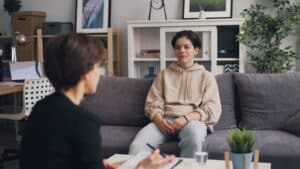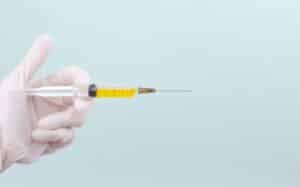This blog post is focused on the neuroscience of creativity. Specifically we will talk about the benefits of art and how art can help your brain and mental health.
Art is known to be a wonderful creative outlet that can tap into passion and create meaning. It beautifies our world and can help teach us the importance of expression. We learn art young with finger painting and elementary school portraits, but as we grow, the incorporation of arts and crafts in learning and work dwindles.
It seems logical, a PowerPoint and Excel data may convey a quarterly report better, but you cannot help but miss the days when projects involved clay, paint, glitter, or all of the above.
There seems to be an unspoken moment in which we all trade in our colored pencils and markers for black pens and keyboards. Supposedly, this marks our journey into adulthood and it signifies growth. In reality, with that trade, we throw away some valuable tools for self-care and stress reduction.
We recommend art as one method of self-care between therapy sessions. You can read more about it in our blog post. The benefits of art may be apparent in our feelings and experiences, but there is also empirical evidence for the positive impact of art on your brain. It has to do, in part, with the neuroscience of creativity and art.
The Neuroscience of Creativity
We know that art is one means of exploring and expressing creativity. We understand that it can make us feel good and accomplished, but not everyone understands why.
A lot of art’s benefits occur in our brains. Creative processes activate important brain areas such as the somatosensory, motor, and visual areas; these are areas that process sensory information – touch, temperature, pain, and sight – and plan or control intentional movement.
Our brains function similarly to our bodies in the sense that we have to stretch and exercise our minds the same way we stretch and exercise our muscles and bodies. When you have not stretched or used your legs in a while, a run feels especially difficult. The same goes for parts of your brain and mental activities.
The best exercises incorporate and work many muscles. A squat predominantly works your legs but requires abdominal activation and upper back strength to achieve proper form and result in optimal muscle gain.
The best activities for your mind also engage multiple brain parts. The neuroscience of creativity suggests that crafting and art are some of those. Researchers at Emory University in Atlanta even suggest that just observing art is good for your brain.
Within the brain, several systems facilitate thought. The default mode network and the executive control network are two such systems. The executive control network is active when you are focused on a specific task in the outside world. It is engaged when you are consciously thinking about and maintaining attention on any one thing.
This is the network steering when you are focused at work, completing a puzzle, and multitasking. Active recall on an exam requires an active executive control network.
The default mode network, in contrast, is normally activated when you are not focused on the outside world. Daydreaming, mind-wandering, thinking about one’s self or others. When thoughts ruminate, the default mode network is likely involved.
The default mode network and the executive control network usually work in opposition. Much like the Atlanta Braves and the New York Mets. Their relationship is often categorized as antagonistic. However, the neuroscience of creativity and creative thought suggests that the two networks interact dynamically in artistic processes (something that would never happen with the Braves and Mets… maybe if they put down their bats and picked up finger-painting).
Current research uses fMRI techniques to evaluate brain activity and connectivity in art. Many studies that exhibit the cooperation of default and control networks have done so through musical improvisation/performance and poetry composition. The findings are hypothesized to apply to other artistic activity, given it requires creative thought.
The extent of control network involvement in creativity seems to depend on how much creative thought is constrained by specific task goals. A school art project with very particular requirements may result in less control network involvement as compared to a free drawing or painting opportunity.
The research suggests that emotion might mitigate network dominance. In one study, two groups of pianists were instructed to improvise a musical composition. The pianists in group one were told that their piece should express a specific emotion. Those in group two were asked to improvise using specific pitch sets.
The pianists expressing emotion had higher default mode network activity and the pianists improvising in specific pitches had higher executive control; network activity.
The involvement of emotion in art – engaging in emotional artistic expression – notably alters how art impacts our brains. This reveals one intrinsic relationship between art and emotion, which may help us understand how and why art is used therapeutically.
Physiological Effects: From Fight-or-Flight to Flow
One common psychology term that you may hear in the context of art is flow. Flow is a positive mental state that can occur when someone is fully immersed in an activity.
In flow, concentration is thought to be intense, focused, and effortless. So much so that consciousness of time and self can disappear. Rewarding feelings of mastering challenges are prominent in flow.
The brain and our physiological states are interconnected, and the brain and body have different states depending on perceived safety or threat. Increased mental stress affects the autonomic nervous system, activating the sympathetic nervous system, and triggering the withdrawal of the parasympathetic nervous system. You can read more about these systems and their basic functions in our blog post Food, Stress, and the Autonomic Nervous System.
You may be wondering how this relates to art and flow. Imagine a U curve. On the upper left side of the curve is fight or flight, at the bottom is drowsiness and sleep, and on the upper right side is flow. Arts and crafts are normally associated with flow states, but outside of flow, art and creating with one’s hands can help keep you on the right side of the curve.
Art or craft that does not require much attention can be beneficial for learning. Doodling or simple tasks like knitting while simultaneously learning by listening has yielded better learning results than passive listening. The thought is that working with your hands in any capacity may keep us from falling to the bottom of the U-curve. It encourages maintenance of the steady, continuous arousal level that we need for learning.
Simple and repetitive arts and crafts may be utilized outside of learning to deliberately push our physiological state further down the U-curve. The hypothesis is that when someone starts a craft activity that they have done before stress or fight-or-flight took over, their body will know how to relax with the craft activity and may override negative, arousing, or threatening thought loops.
The neuroscience of creativity helps us understand how working with your hands can elicit positive physiological and psychological states and may have the potential to regulate physiological states. Art making has been shown to reduce blood pressure, boost the immune system, and reduce stress. These are all desirable benefits that deal with our physical state of being. Art also enhances our minds and mindfulness.
Atlanta, where Best Within You Therapy and Wellness is based, has some great opportunities to craft and exercise your brain. Check out a few here.
If you would like to schedule a therapy appointment or have any questions please fill out a contact form.
Thank you to Atlanta psychologist Dr. Laura Riss and Best Within You Therapy & Wellness intern Mia Pearce for this blog post.
















